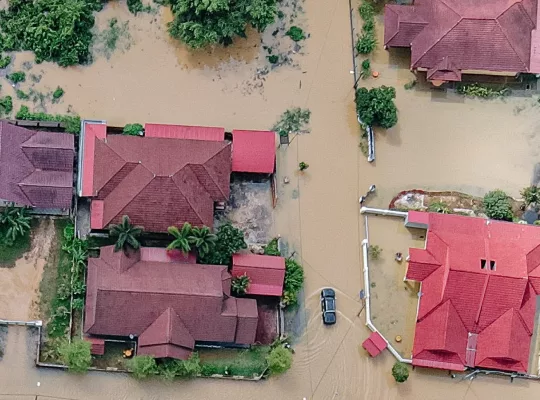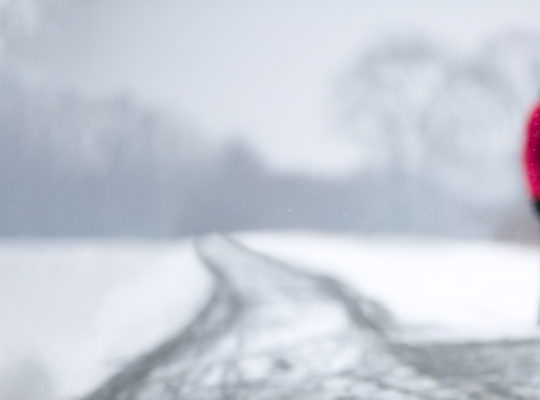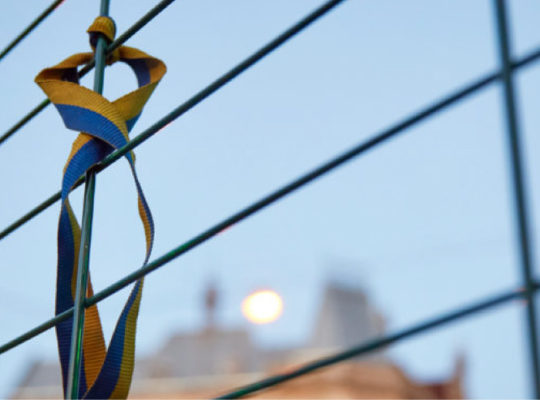Spring is in the air in Rochester (with a potential record-breaking temperature today, higher than the 86°F set in 1990), and with it comes more sunshine, more time outdoors, and – unfortunately – the potential for a different set of injuries. The warmer seasons pose an entirely different set of risks than the winter months we are (finally) moving past. While keeping a Home First Aid Kit packed with Basic Supplies is essential year-round, taking a look at common warmer-weather injuries can help you stock up on supplies you’re most likely to need. We will review the top 5 warm weather injury treatments, so you know how to be prepared. Some of the most common spring/summer injuries (for kids and adults) include scrapes, stings, burns, sunburns, and bumps/bruises.
Treatments for Scrapes
Minor scrapes and cuts are almost an everyday occurrence for both kids and adults. The most crucial part of treating a cut is making sure the wound is clean before covering it with a bandage or gauze pad. Cleaning with antibacterial soap and water is a simple precaution that can and should be taken immediately; this step can prevent infection and scarring by removing bacteria from the wound before starting the healing process. This is important if the scrape falls outside, as dirt and debris can lodge themselves deep in the wound. Using a harsh wound cleaning solution (such as Hydrogen Peroxide or Rubbing Alcohol) on a small cut can further damage the tissue and extend the healing process. After cleaning with soap and water, using an Antibiotic Ointment or Spray (such as Neosporin) can reduce the discomfort during the healing process. Using a bandage to cover the wound protects it from further irritation. If the wound will not stop bleeding or is more profound or painful than normal, seek medical attention immediately.
Tip: Caring for a scrape is all about keeping it clean while healing to prevent infection and further damage.
Products to stock for scrapes: bandages (various sizes), antibacterial sprays or soap, Neosporin, or other Antibiotic Ointment (optional)
Treatments for Stings
From bee stings to mosquito bites, stings are most prevalent in the spring and summer months (so prevalent that we have developed a specific Insect Sting Relief Kit). Preventatively, we recommend using an insect repellant spray, which significantly reduces the chances of you being stung. These bites are most dangerous if a) you have a known allergy to the stings or b) you are in a high-risk area for the Zika Virus or West Nile Virus. If the person has an allergy or begins to show severe signs such as dizziness, shortness of breath, hives, extreme swelling of the tongue or point of the sting, or loss of consciousness, call 911 immediately begin treatment for a severe allergic reaction. Make sure to use an EPI-Pen if necessary.
Treating a sting involves removing the stinger by gently scraping along the area with a flat edge, such as a credit card. Squeezing the area of the sting can cause further irritation and swelling. Once you remove the stinger, applying a Sting Relief Product can help reduce the pain and itchiness associated with a nasty sting. This product is beneficial for children. It also helps cover the sting with a bandage to avoid itching or rubbing and causing further irritation and scabbing. Read more on stings here.
Tip: Try to be aware if anyone has severe sting allergies and run through an emergency process with them in a sting event, so you are as prepared as possible.
Products to stock for stings: Insect repellant spray (preventative), bandages, Claritin RediTabs or other OTC pain relief products (optional), cold packs (optional)
Treatments for Burns
Burns are common in the spring and summer – be it from a grill, a campfire, or even a hot driveway (not so severe, but a burn regardless). First Degree burns are burns that only affect the top layer of skin and heal without medical attention. Second-degree burns are burns that blister and become sore. Correctly caring for these burns is crucial, as these burns are especially prone to infection during the healing process. Third-degree and above burns require immediate medical attention. To treat a burn, submerge the area in cold water. Alternatively, wrap the afflicted area in a wet towel saturated in cold water. After calming the initial redness and ensuring the burn is clean, covering the wound is important.
Using Burn Gels can help with burns’ comfort, and a burn dressing can protect the wound during the healing process. We recommend avoiding sticky adhesive bandages while treating burns because if the burn begins to peel, the adhesive bandage can cause further damage and slow down the healing process. We recommend stocking some of the supplies from our Burn Care Kit (if not the kit itself!)
Tip: If the burn is not healing correctly, follow up with a medical specialist. This could be due to underestimation of burn severity or improper care.
Products to stock for burns: Towels, Burn Care Products
Treatments for Sunburns
Sunburns are more common in the summer but are often not considered in the springtime. You can get a worse sunburn when it is overcast, especially if you have fair skin. Preventatively, it is essential always to wear sunscreen, even if it isn’t highly sunny out. However, treating a sunburn is similar to treating a regular burn (though less extreme). Cool the burn with cold water or cold compresses, but don’t expose the skin directly to ice or an ice pack (wrap it in a towel first). This will reduce body temperature and help the burn heal. Using cooling agents such as a burn spray with aloe (or even natural aloe vera) can soothe irritated skin and help the healing process.
Tip: Using a moisturizing lotion to lock in moisture and replenishing your fluids by drinking water can help your skin. Avoid petroleum-based moisturizers as they can trap the heat in your skin.
Products to stock for sunburns: Towels, Aloe Vera, Bottled Water, Cold Compresses
Treatments for Bumps + Bruises
Being outside can inevitably lead to bumps and bruises. While these are not serious injuries because the skin is less prone to infection if it doesn’t break, they tend to become achy if not treated. Common treatments for a bruise involve a cold compress or an ice pack to reduce swelling and use a common pain reliever to reduce pain in the healing process. As a general rule of thumb, the icing on and off 24-48 hours should help successfully lessen the swelling. If the bruise is near a joint and the pain persists, you may need to see a medical professional check for a sprain or a strain.
Tip: Getting the average bump or bruise is not a particularly serious injury. However, if pain persists, the injury could be more serious, such as a strain or sprain. Seek medical attention.
Products to Stock for Bruises: Cold Packs, Pain Relief OTC Products, Braces and Supports (optional, in the event of a sprain or strain)
———
Wishing everyone a safe and happy spring and hoping this helps you sort out your Spring First Aid Must-Haves!
NOTE: Home First Aid is not a substitute for Professional Medical Care. Please seek Professional Medical Help in the case of a severe injury. Listed above are common First Aid treatments for common injuries.
———
Wishing everyone a safe and happy spring and hoping this helps you sort out your Spring First Aid Must-Haves!
NOTE: Home First Aid is not a substitute for Professional Medical Care. Please seek Professional Medical Help in the case of a serious injury. Listed above are common First Aid treatments for common injuries.






